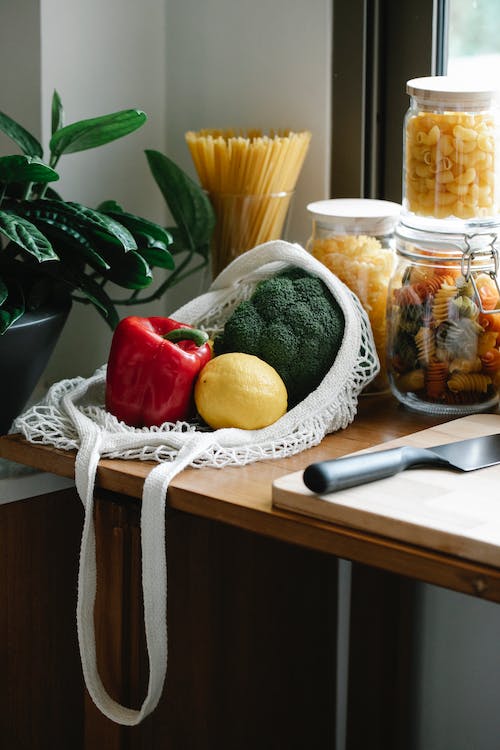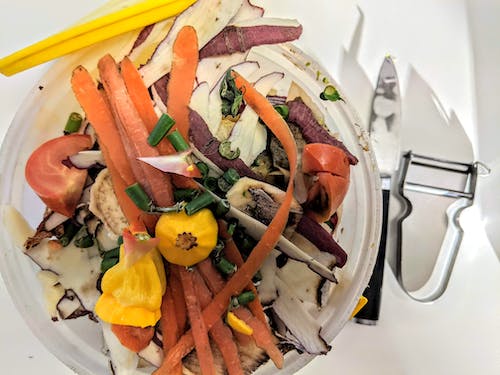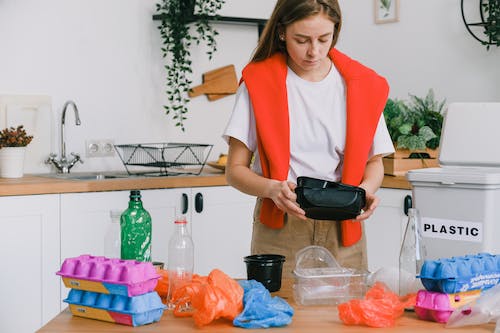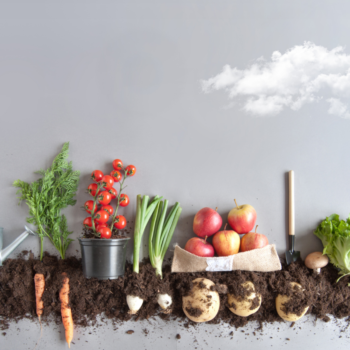|
|
Welcome to the world of a perfect zero-waste kitchen, where eco-conscious choices benefit the environment and lighten the load on your wallet. Did you know that in recent years, food waste in the United States has seen an alarming surge, reaching 103 million tons (or 206 billion pounds), as the Environmental Protection Agency (EPA) reported? To put this into perspective, that’s equivalent to more than 450,000 Statue of Liberty.
But fear not because, in this article, we’re delving into the practical steps that can help you transform your kitchen into a sustainability powerhouse. Get ready to discover how you can significantly impact the planet while crafting an eco-friendly and budget-friendly kitchen. It’s a win-win recipe for a greener, more prosperous future.
1. Reduce Food Waste
To kickstart your journey toward a zero-waste kitchen, start by cutting down on food waste. Plan your meals, jot down a shopping list, and buy only what you need. Keep an eye on those expiration dates, and prioritize using the older items first.
Got leftovers? Get creative! Transform them into new and exciting dishes. For example, turn yesterday’s rice into a tasty stir-fry or blend overripe fruits into a delicious smoothie. Remember, every bite saved is a step closer to a greener kitchen.
Source: USDA Food Loss and Waste Facts
2. Say No to Plastic

Plastic is a big kitchen troublemaker, but you can show it the door. Bid farewell to single-use plastic bags, cling wraps, and disposable utensils. You can reuse produce bags, beeswax wraps (like magic cling wraps you can use repeatedly), and trusty stainless steel or glass containers for storing your meals.
These swaps aren’t just eco-friendly and super sturdy and easy to wash. Plus, they’ll have your kitchen looking chic!
Source: Plastic Pollution Facts and Figures
3. Choose Eco-Friendly Cleaning Products
Cleaning your kitchen? Opt for cleaning products that won’t harm the environment or your health. Many conventional cleaners contain harsh chemicals that aren’t good for either. Instead, go for eco-friendly cleaning options crafted from natural ingredients. And for that extra eco-boost, choose products with compostable or recyclable packaging – less waste, more sparkle!
Source: Environmental Working Group Guide to Healthy Cleaning
4. Embrace Kitchen Swaps
Trade in disposable paper towels for reusable cloth ones or some old rags – they’re washable and ready to mop up spills. Ditch plastic sponges for biodegradable alternatives like loofah or silicone dish scrubbers. These simple zero-waste swaps add up, saving you money and cutting kitchen waste.
Source: 12 Best Eco-Friendly Alternative to Sponges
5. Buy in Bulk

Buying in bulk isn’t just pocket-friendly; it’s also packaging-friendly. Instead of picking products smothered in plastic, bring your reusable bags or containers to the store. Fill them up as much as you need, and you’ll see less plastic junk in your kitchen.
Source: Zero Waste Bulk Grocery Shopping Guide
6. Opt for Sustainable Kitchen Utensils
Invest in top-notch kitchen utensils that stand the test of time. Look for bamboo, stainless steel, or silicone-made goodies – they’re non-toxic, easy to clean, and don’t clog up landfills. Bye-bye, disposable plastic forks!
Source: Best Non-Toxic Cookware Sets to Keep Your Food and Yourself Safe
7. Compost Bin Essentials

A compost bin is your zero-waste kitchen’s best friend. Fill it with food scraps, coffee grounds, and other organic waste. Throw in fruit peels, veggie scraps, tea bags, and eggshells. Over time, this will turn into nutrient-rich soil, perfect for your garden.
Source: Compostable Materials: Household Items You Can Safely Compost
8. Use Reusable Tea Bags
Tea lovers, unite! Swap out those traditional tea bags, many of which contain uncompostable plastic, for reusable metal or cloth tea filters. You’ll be sipping sustainably and reducing daily waste.
Source: This is why using tea bags can harm your health!
9. Support Local Farmers

Get the freshest produce while supporting local farmers. Buying local reduces the carbon footprint of your food because it doesn’t travel as far. Look for nearby farmers’ markets or join a community-supported agriculture (CSA) program to score farm-fresh, plastic-light produce.
Source: Organic Vs. Sustainable Farming
10. Embrace a Vegan Lifestyle
Going vegan isn’t just great for your health; it’s a green powerhouse for the planet. Animal farming uses up lots of resources and generates loads of waste. Adopting a vegan lifestyle reduces the demand for factory farming, contributes to a more sustainable food industry, and lightens your kitchen’s ecological footprint.
Source: Sustainable Diets: What You Need to Know in 12 Charts
Frequently Asked Questions
A zero waste kitchen is a kitchen that aims to minimize waste by utilizing sustainable practices and reducing the amount of waste generated from cooking, food storage, and everyday kitchen activities.
A: Creating a zero waste kitchen involves adopting waste-free habits and making sustainable choices. This includes reducing food waste, using reusable containers and bags, composting food scraps, and avoiding single-use plastics.
To reduce food waste in your kitchen, plan your meals, make a shopping list, and buy only what you need. Store food properly to prolong freshness, and use leftovers creatively to minimize waste. Composting food scraps is also a great way to divert organic waste from landfills.
Some common zero waste kitchen swaps include replacing plastic cling wrap with beeswax wraps, using silicone food storage bags instead of disposable plastic bags, switching from paper towels to reusable cloth towels, and using compostable or reusable coffee filters instead of disposable ones.
Yes, several kitchen products can help create a zero-waste kitchen. Some examples include reusable silicone food storage bags, stainless steel or glass food storage containers, beeswax wraps, compost bins, cloth produce bags, reusable coffee filters, and bamboo or stainless steel utensils.
Reduce single-use plastics such as plastic bags, straws, and utensils to make your kitchen more plastic-free. Replace plastic food storage containers with glass jars or stainless steel containers, and choose kitchen tools and accessories made from sustainable materials like bamboo or stainless steel.
Some tips for going zero waste in the kitchen include meal planning to reduce food waste, buying in bulk to minimize packaging waste, using reusable containers and bags, composting food scraps, making your cleaning products, and avoiding single-use plastics.
Having a waste-free kitchen involves implementing sustainable practices and minimizing waste generated. This can be achieved by reducing food waste, using reusable containers and bags, composting food scraps, avoiding single-use plastics, and making conscious choices about the products and packaging you bring into your kitchen.
Some essentials for a zero-waste kitchen include reusable shopping bags, glass jars or stainless steel food storage containers, cloth towels or napkins, a compost bin or composting system, reusable coffee filters, and sustainable cleaning products. These items can help you reduce waste and live a more environmentally friendly lifestyle in the kitchen.
You can find more information about waste free living by exploring websites and blogs dedicated to sustainable living, reading books on zero-waste lifestyles, following social media accounts of zero-waste influencers, and joining online communities or forums that discuss zero-waste practices and tips.
In Conclusion: Converting a Zero-Waste Kitchen
As you start making your kitchen waste-free, remember that even small actions matter for our planet. By following these 10 steps, you’re not just reducing kitchen waste; you’re part of a global movement for a greener future. Your choices reach beyond your kitchen and affect the whole world. You’re not just making a waste-free kitchen; you’re leaving a lasting mark on our planet with mindful choices.
So, welcome the change, enjoy sustainable living, and inspire others to join you. Every reusable bag, every composted scrap, and every eco-friendly choice brings us closer to a brighter, cleaner future for all. Together, we can create a world where sustainability thrives and waste becomes a thing of the past.












